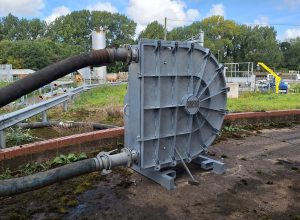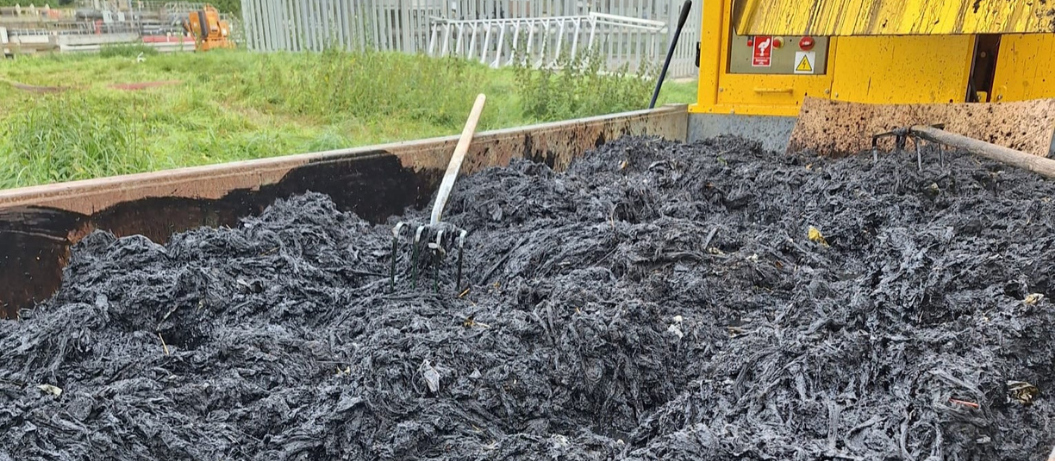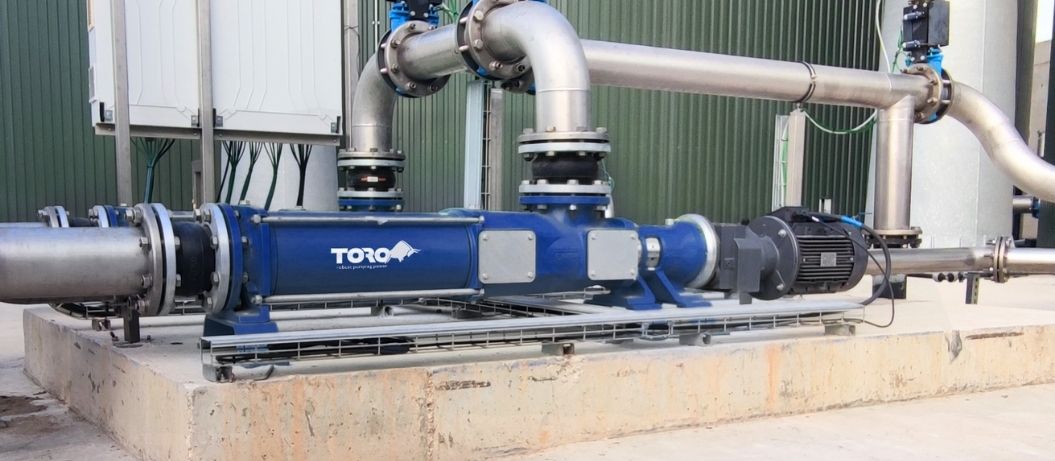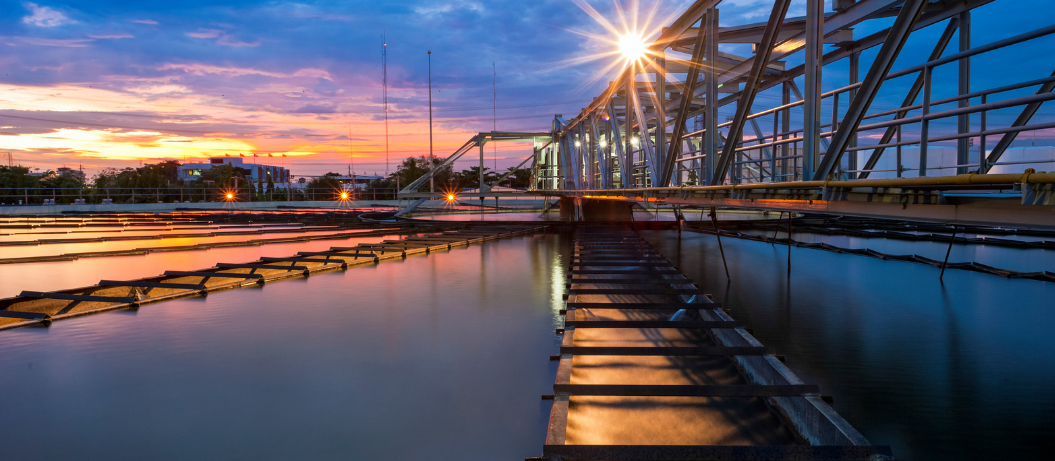What Is Rag?
The first step in solving any problem is to go back to the basics and the root cause, so let’s start from the beginning: what is “Rag” – that Demon in the Wastewater Treatment Process?
“Rag” is the name given to fibrous materials which originate from wet wipes, textiles, nappies, plastics, sanitary products, and paper hand towels and even kitchen paper. These materials are not designed to break down easily in water and therefore remain mostly intact as they pass through the sewage network and into Wastewater Treatment Works.
The result? Tangled masses that clog pumps, pipes, damage equipment, and choke wastewater systems.
We know these invaders shouldn’t be there as they shouldn’t be flushed, and we know that some treatment systems are not fit to handle these foreign objects, especially on older or neglected assets.
These issues are exacerbated when such materials enter the system unchecked, leading to inefficiencies downstream that hinder the treatment process and place additional financial pressures on utility operators. Rag can be a direct cause of environmental spills, leading to pollution, massive hikes in operational cost for the Water Company and, of course, the resulting fines and negative press.
It’s all too easy in the Water Industry to get caught up in the classic cycle of being too busy to sort the problem that’s making us so busy. Time spent firefighting the effects robs us of the time to explore new ideas and products that could help resolve the root causes. Instead, we often see decision makers reverting to doing ‘what they always did and getting what they always got’. Replacing ‘like for like’ seems the quickest and least risky option, at least in the heat of the moment. What can go wrong with buying that same type of pump for the umpteenth time, the one my manager signed off on 15 years ago?
Does repeated equipment failure, ever-increasing risk of fines, a proliferation of new regulations, and increasing pressure from watchdogs and the public sound uncomfortably familiar?
Successive governments seem to throw in new regulations every few months – the only tool they know – but fundamental change only happens when we change what happens on the ground; our choices and decision making, daily schedules, and the actual equipment or methods used. Such a change isn’t easy – it is a monumental effort, and the industry’s wealth of experience is needed, alongside a clear vision, supportive partners – and innovative solutions.
What brought us to this situation? It could be a culture of extreme risk aversion (in a highly regulated industry), investment restrictions, or a restrictive supply chain. The nature of framework agreements promotes the repetitive use of the same suppliers and processes, leading to repetitive mistakes and failures to adapt.
Opening the door to new suppliers who can bring fresh innovations and cross-sector experience offers a way out of this fast-spinning whirlpool. According to an industry insider we spoke to, many of the long-standing suppliers have become complacent, with little incentive to reduce the spend on replacements and repairs of their repeat customers. Driving innovation to deliver better value to their customers would dent their own financial performance, as the thinking goes. Our source, who we can’t name for their safety (!), went on to conclude, “The water Industry needs more choice and to embrace that choice when it is offered. We are all to blame [for the current situation] in some way.”
Focusing on ragging, one of today’s major challenges in wastewater and sewage management, we’ll look at its impact, root causes, and a multi-pronged approach to dealing with it successfully.
All ragged up with nowhere to go: the impact of ragging on wastewater systems
Ragging poses several severe operational challenges, affecting various components across wastewater treatment plants. The damages caused exert both direct and indirect costs on water companies, including:
Equipment malfunctions
Pumps and pipelines frequently clog due to tangled rags, severely affecting flow rates and system efficiency. Screen damage and MBR fouling become more commonplace in rag-heavy systems, increasing the risk of downtime and exacerbating maintenance costs.
Maintenance and downtime
Blockages lead to unscheduled system downtime and service disruption to customers, increasing labour costs and requiring potentially costly replacements for damaged equipment.
Energy inefficiency
Blockages result in higher energy consumption to maintain pressure or restart equipment, inflating operational costs.
Penalties and reputational risks
Prolonged downtime or system inefficiencies can lead to spills and pollution with regulatory fines or dissatisfied customers, both of which tarnish a utility’s reputation and ultimately, financial performance.
So, what are some of the underlying issues here?
- Mismanagement of waste disposal: Public behaviour and attitudes play a major role in introducing ragging materials into wastewater systems. Items like wet wipes – often incorrectly considered flushable – are flushed down toilets instead of being disposed of properly. Additionally, industrial facilities sometimes discharge inappropriate materials into sewer systems, exacerbating the issue. Illegal connections are another factor. Combined, these behaviours introduce significant rag and other contaminants into wastewater flows. The Water Companies get a lot of criticism, and it is debatable whether that is always fair or not, but let us be clear that we, the customers, are not helping. This is a problem for us all to solve, together. At the end of the day, we all sit at the start of the sewer system – sewage starts at home!
- Design limitations: Certain sewer system designs are more prone to rag build-up than others. Systems with complex networks, bends, or deposits, for example, naturally trap fibrous materials, creating significant blockages over time. Similarly, older infrastructure may lack modern trapping or flow optimisations designed to prevent materials from accumulating.
- Poor screening processes: Insufficient or outdated screens allow fibrous materials to pass through initial filtration stages. Once these rags escape into the system, they can quickly accumulate downstream. Membrane bioreactors (MBRs) are particularly vulnerable because they rely on precise working conditions, and even small accumulations of rags can negatively affect their operation.
- Dogmatic approach to pump type choice. Around 80% of all pumps in the sludge treatment process, for example, are of one type, and that type, being rotary, does not handle rag well at all. Yet, contractors keep installing them. Specifications and standards need revisiting to meet modern challenges: population growth, a throw-away society, plus the growth in plastics and other resilient materials entering the system. Where Rag is a threat, design and select for it.
- Knowledge: There are huge skill gaps as workers retire or technology develops. The greatest source of knowledge on how different machines and systems react to upset conditions comes from the Original Equipment Manufacturer (OEM). Many large OEMs are failing to bring the added value that more energetic market disruptors are willing to do – that of assisting the end users and contractors to upskill their people. True partnerships embrace and encourage knowledge exchange. Martin Gilman, Head of Water at Atlantic Pumps, says, “We like to teach clients how their pumps work, how they can be optimised, and how to extend the time between failure [MTBF]. Additionally, where Atlantic Pumps don’t yet have a proven solution for a customer’s pain point, we’ll happily tell them what else is out there that might be a better choice.” It’s better long-term to ‘lose’ an order and keep a customer, is the premise.
Solutions to minimise ragging
To combat ragging effectively, wastewater companies need both robust infrastructure and proactive measures:
Upgrade your screening systems
Modern screenings and filters equipped to catch fibre-based materials can significantly reduce rag introduction. By upgrading to finer screens or incorporating secondary filtration stages, wastewater plants can prevent accumulation before it creates major disruptions.
Invest in specialist and alternative equipment
Long-established industries such as Water can be slow to make changes and embrace innovation. Many of the pumps traditionally used throughout the treatment process remain the same as they have been for decades, despite it being well known that they cannot handle rag – they were simply not designed to do so. Although investment in the industry has doubled since privatisation, many of today’s treatment plants are still using pumps invented before the advent of so-called disposables and the proliferation of plastics in everyday sanitary products. Aversion to risk of trying new things and the ‘you’re not on the Framework’ mindset can block the adoption of new ideas and technology, despite Ofwat’s initiatives to encourage novel approaches, such as Spark and The Innovation Fund. The Water Industry needs to “open its ears, mind and supply chain” according to our source, and create more routes for specialists from other backgrounds to get involved. Words and phrases such as ‘Spend to save’ and ‘Optioneering’ are often deployed in strategic discussions, yet seldom seen in practice.
Selecting pumps designed to handle higher rag content can avoid system choke, gaining operational uptime and paving the way for further innovation. Pumps featuring innovative mechanisms to process solids, such as those with reverse-direction and dry-running capabilities, are invaluable. Pressure or flow sensors can be connected to a control module, automatically initiating a few seconds of reverse flow if a blockage is detected. High-volume, slow-rotation pumps deny fibres the opportunity to rag around a fast-spinning impeller, which typically creates the weaving action responsible for a lot of ragging issues.
Regular and effective cleansing
The use of a portable Rag and Grit removal plant periodically helps remove the material build-up before it reaches an extent where reduced vessel volume affects process throughput.
Public awareness campaigns
Let’s get to the root of the problem. Proper disposal of sanitary products and other non-flushable materials requires public cooperation and widespread education on best practices. Campaigns targeting households and industries around correct waste disposal habits, along with labels discouraging flushing, can dramatically reduce rag water content at a local and national level. Harder-hitting public information shots showing the effect of a spill that can be directly attributed to Rag would be an honest way to bring the message ‘home’.
Ongoing educational initiatives that tie consumer values with consumer behaviour – such as linking personal choices and actions to their economic and ecological impact – are vital.

How is Atlantic Pumps helping the Water Industry tackle rag?
Atlantic Pumps offers a range of cutting-edge wastewater management solutions, including anti-ragging and anti-blockage pumps. A key highlight for rag is our Large Industrial Peristaltic pump, proven to help STW and WwTP tackle ragging issues head-on. Designed specifically to manage high and large solids content, the LSM pump will pass a solid mass of up to 200mm. Further innovative features that make the LSM pump stand out include:
- No rotating parts in the liquid – This ensures fibres aren’t re-woven into rag bundles.
- Capability to pass large solids and rag mass – The pump handles large solids efficiently, preventing frequent clogs.
- Reversing mechanism – Rare blockages can be quickly cleared by simply reversing the pump direction, drastically reducing downtime.
- Slow rotation – Minimal rubbing velocity and lower power requirements, helping wastewater companies hit their net-zero target in a cost-effective way.
- Highlights of the LSM capabilities – high suction lift, happy with dry run, manages sludge to over 12% Dry Solids with high Rag and Grit content.

The LSM pump’s robust design demonstrates how strategic infrastructure choices can help wastewater companies operate more efficiently while mitigating the ongoing challenge of Rag.
It’s there, so let’s handle it.
Access our free guides & resources
For more tips, please download our free Buyers Guide To Dirty Water Pumps
Access and save the LSM Brochure now, or book an online presentation on ‘Rag and Grit in Sludge Steams’ to upskill your team.
We also take a sustainable approach to our work and are committed to reducing energy waste from pumps. Our expert knowledge allows us to reduce energy usage by 20% on the average site!
Call us today on 0808 196 5108 for more information.
 October 22 2025
October 22 2025 6 min read
6 min read



